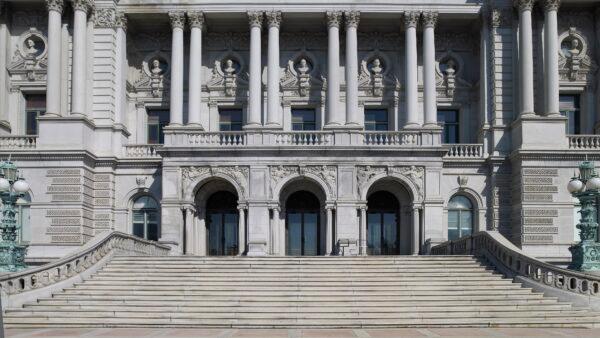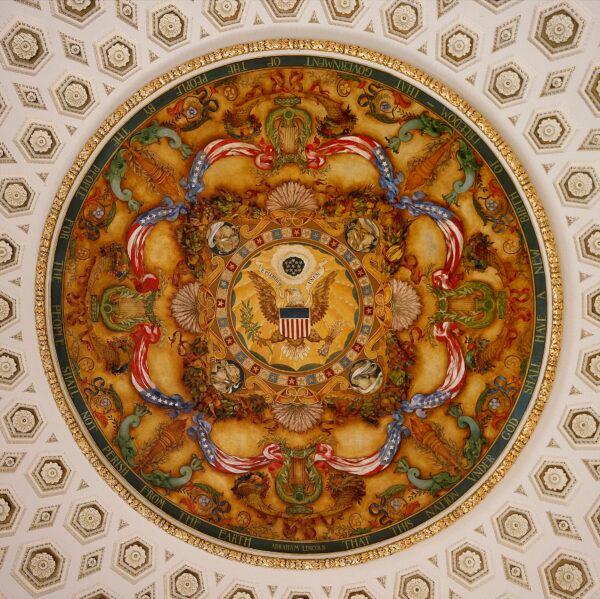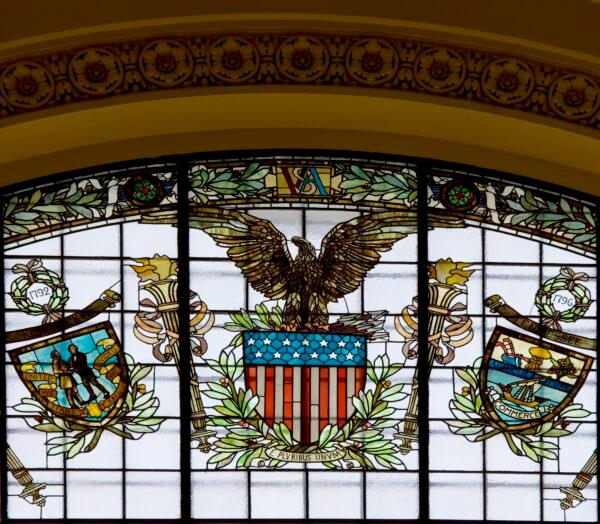“Not until I stand before the judgment seat of God do I ever expect to see this building transcended,” a visitor proclaimed of the new Library of Congress building in Washington, which opened on Nov. 1, 1897.
The library, now known as the Thomas Jefferson Building, is inspired by Palais Garnier (built to house the Paris Opera), which is considered the best example of the Napoleon III style of late-19th-century architecture. The Library of Congress building is an exquisite example of the Beaux Arts architectural style, where ornate decoration and functional design meld together with theatrical appeal.

Aerial view of the historic Library of Congress Thomas Jefferson Building. Public Domain

Carol M. Highsmith / CC BY-SA 3.0
Visitors must ascend a monumental staircase at the main entrance to the library that faces the Capitol Building. The library’s many flights of stairs and landings offer visitors a chance to stop and admire the surrounding grandeur.

The west façade of the Thomas Jefferson Building faces the Capitol Building. Public domain
Corinthian columns and portrait busts of famous writers adorn the façade. And at the entrance itself, three bronze doors are graced with allegories of “Tradition,” “Writing,” and “Printing,” as if announcing the treasures inside. Also echoing the building’s intent, on the apex of the library’s reading room dome, the “Flame of Knowledge” is alit in gold, heralding a world of inspiration held within the building.
The exterior beauty of the Jefferson Building is but a prelude to the national treasure trove that awaits visitors inside. “In this library is found, of what yet survives, the best of what has been made, said, and done: within the stacks and vaults, universal knowledge, history, biography, literature, invention; upon the walls, names, quotations, portraits, pictures, and statues,” writes author Michael Curtis in “Classical Architecture and Monuments of Washington D.C.: A History & Guide.”

The ceiling of the Thomas Jefferson Building says: “That this nation under God should have a new birth of freedom. Have government of the people by the people for the people shall not perish from the earth.” Public Domain

The main reading room at the Thomas Jefferson Building. Public Domain

Stained glass window in an alcove of the reading rooms at the Thomas Jefferson Building. Public Domain

“They are never alone that are accompanied by noble thoughts,” says the inscription below an allegory of Summer. Public Domain

Detail of a ceiling in the Thomas Jefferson Building. Public Domain

“Wisdom is the principal thing, therefore get wisdom, and with all thy getting, get understanding,” says an inscription below a mural representing understanding. Public Domain

A ring of Grecian girls decorates a dome in the Librarian’s Room. Public Domain

Mosaic of Minerva by American painter Elihu Vedder, in a central arched panel leading to the visitors' gallery. Public Domain






